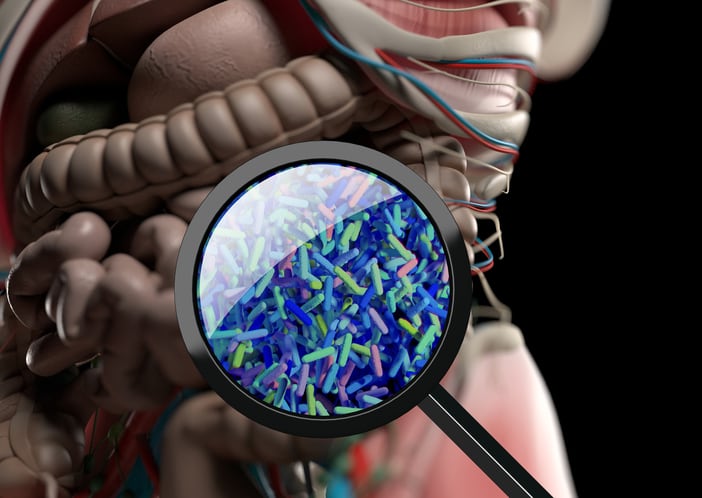Type 2 diabetes mellitus (T2D) involves increased peripheral insulin resistance and a loss of pancreatic β-cell function (resulting in reduced insulin secretion), which contribute to a gradually deteriorating glycemic control.
Oxidative stress and low-grade systemic inflammation are the main determinants of β-cell dysfunction. Patients with T2D suffer increased oxidative stress in terms of advanced glycation end products (AGEs) and malondialdehyde (MDA). Preserving β-cell function and reducing oxidative stress are, therefore, essential to the management of the condition.
Metformin is the treatment recommended for the treatment of hyperglycemia but in approximately 30% of patients initially responsive, this treatment no longer suffices after three years and patients must be given a second hypoglycemic agent.
Nutraceutical supplements can help inhibit intracellular inflammatory cascades, the formation of oxygen free radicals, and the production of pro-oxidant substances in T2D. In particular, berberine (a benzylisoquinoline alkaloid obtained from Berberis species of plant) is one of the molecules with the best-documented hypoglycemic activity, and it improves glucose tolerance.
Hesperidin is a glycosylated flavonoid which accounts for 90% of all orange flavonoids. It has vasoprotective properties and appears to play a key part in countering micro-inflammation and oxidative stress at the cell level.
Chromium Is an essential trace mineral that has been reported to improve insulin sensitivity and enhance protein, carbohydrate, and lipid metabolism, as well as glucose tolerance.
The aim of the current study was to evaluate the overall metabolic effects of a 12-week add-on therapy with a new nutraceutical formulation (BHC, provided by Labomar srl) based on berberine, hesperidin, and chromium picolinate in T2D patients receiving metformin.
Participants were recruited at the Diabetes Clinic of the ULSS 6 Padova, in Italy. Participants adopted the same standard diet for diabetes, adjusted for individual energy needs, and were randomly assigned to receive metformin alone or metformin plus the supplement.
The following measurements were taken: Fasting blood glucose (FBG), total cholesterol, HDL, LDL ('good' and 'bad' cholesterol), triglycerides, glycated hemoglobin (HbA1c), Malondialdehyde (MDA), inflammatory markers (hsCRP, IL-1β, TNFα, and IL-6), insulin, C-peptide, and glyco-oxidation (AGE and sRAGE).
Resulting data indicated that adding BHC in the treatment of T2D patients resulted in lower HbA1c and FBG levels. This was particularly noteworthy considering they were only receiving a low dose (250 mg) of berberine and the patients' baseline HbA1c levels were already low.
The authors state: "As BHC consists of a combination of nutraceuticals, there is no way to distinguish between the effects of the single components. It has been hypothesized, however, that chromium can only have an effect in reducing HbA1c and FBG in patients with a particular T2D phenotype, i.e., HbA1c > 64 mmol/mol (8%), FBG > 9.7 mmol/L (175 mg/dL), a marked insulin resistance, and a short history of diabetes (less than 5 years or so).
"The reason for including hesperidin in the nutraceutical product tested here is to take action on a patient’s lipids, glyco-oxidation, and inflammation. Our results regarding MDA levels are highly significant, and very intriguing because they indicate a decrease in lipid peroxidation, in line with the result reported by Homayouni et al.
"The main limitations of our study concern the small number of patients considered, and the low doses of the compounds investigated—though we consider it important to explore the efficacy of nutraceutical products at lower doses than those already found effective. Our data suggest that BHC supplementation for 3 months has a positive effect on glyco-oxidation and lipid peroxidation in patients with T2D."
Mechanisms of action
The product used for the study was supplied by Labomar srl (Istrana, Italy) in the form of coated tablets formulated with EnterosomaTM Technology (chitosan salt; Labomar patent). The active ingredients are Berberis aristata DC. extract 250 mg, titrated at 97% in berberine hydrochloride (HCl), hesperidin 200 mg (from Citrus aurantium L. fruit), and chromium picolinate (200 mcg). EnterosomaTM consists of a gastro-resistant tablet containing a chitosan polymer and N-acetylcysteine in the inner core, together with the active ingredients. This enables enterocyte-associated Pg-P activity modulation and tight junction cohesion lowering, thus enhancing the bioavailability of the active ingredients.
Berberine's pharmacological and biochemical mechanisms of action have been established. It has been shown to promote insulin secretion and improve β-cell function in the pancreas, to increase the secretion of glucagon-like protein-1 in the intestine, and to reduce the intestinal absorption of glucose, to regulate glycolipid metabolism and reduce gluconeogenesis in the liver by modulating the expression of peroxisome proliferator-activated receptors, and to stimulate glycolysis in peripheral cells. Berberine also possesses antioxidant properties and appears to be involved in modulating intestinal flora.
This ingredient is poorly absorbed by the intestine and has a limited oral bioavailability due to the presence of permeability glycoproteins (P-gp) that act as a functional barrier by expelling berberine from the cell towards the intestinal lumen. To overcome this problem and improve the bioavailability of berberine, the tablet used in the current study is formulated with EnterosomaTM Technology (Labomar patent), a patented chitosan salt that interacts with P-gp, limiting the expulsion of berberine from the cell, and favoring its entry into the circulation].
Recent clinical studies have shown a correlation between the intake of hesperidin and endothelial function (with an increase in endothelium-dependent vascular reactivity, and changes in the concentration of endothelial activation markers) and circulating inflammation markers. Hesperidin has revealed interesting pharmacological antitumor, lipid-lowering, and antioxidant properties in animal models of T2D. A hypoglycemic and lipid-lowering effect of this nutraceutical has been envisaged too, through the modulation of important enzymes such as PPAR and HMG-CoA reductase.
The usefulness of chromium in treating patients with T2D, and its mechanism of action are still under study, however. Great attention recently focused on chromium supplementation in animal models and humans with T2D, and its effects on glycemic control parameters and markers of inflammation and oxidative stress.
Source: Nutrients
Sartore, G.; Ragazzi, E.; Antonello, G.; Cosma, C.; Lapolla, A.
"Effect of a New Formulation of Nutraceuticals as an Add-On to Metformin Monotherapy for Patients with Type 2 Diabetes and Suboptimal Glycemic Control: A Randomized Controlled Trial"





